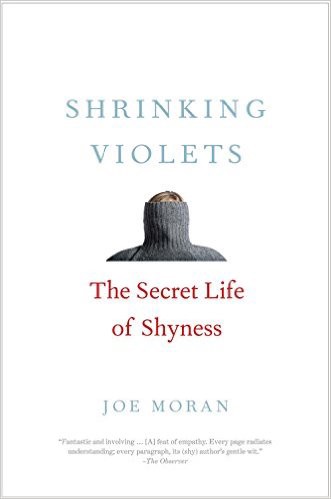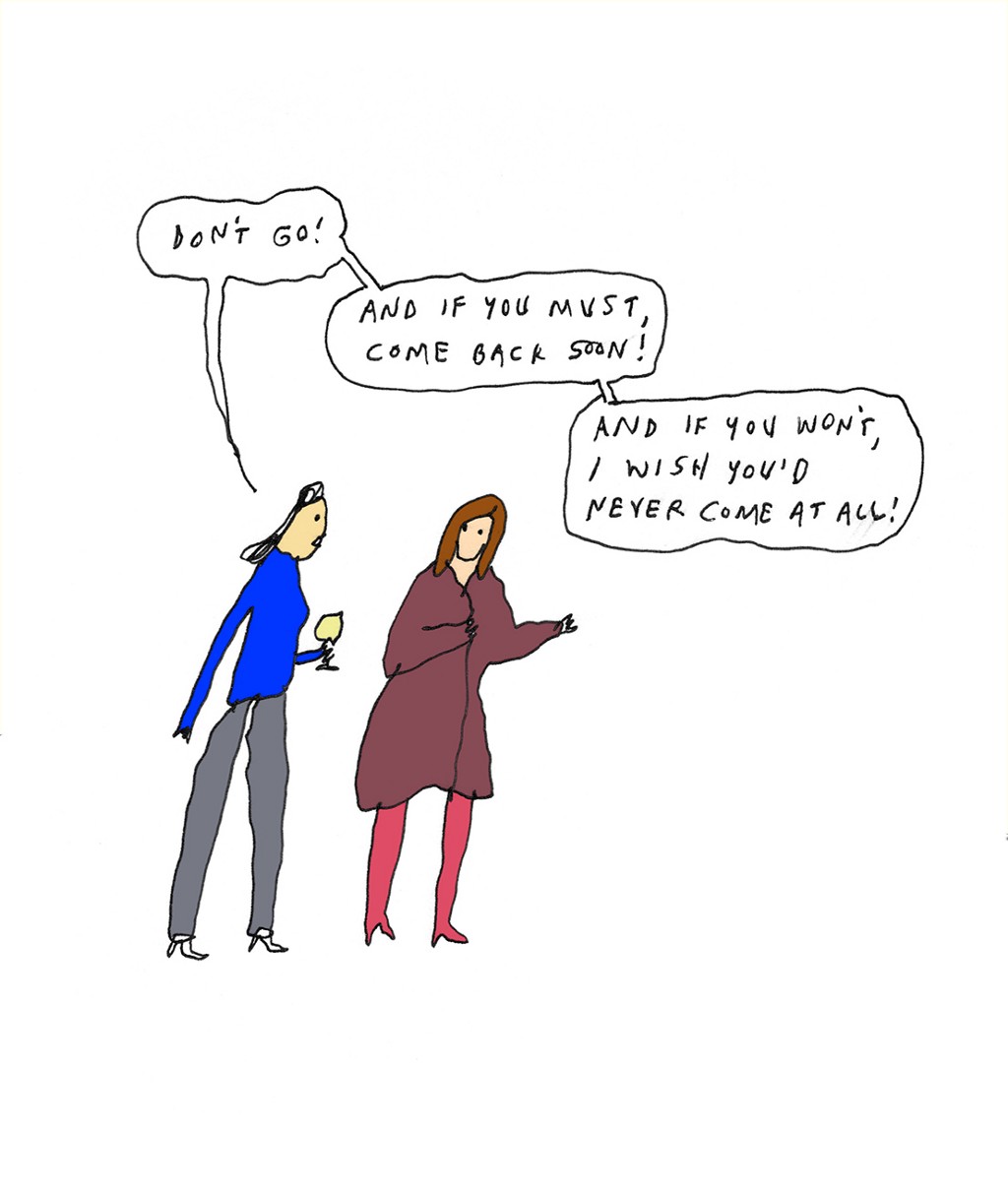Leonard Cohen, "Traveling Light"
Now it’s summer.

It’s Friday and it’s going to be 70° today. Watch this video and then do whatever you have to do to get yourself outside and stay there until the sun sets, which is at 5:42. I’m not saying everything’s amazing, because we all know that would be a lie, but look, you get what you’re given and do what you can. Enjoy.
New York City, February 22, 2017

★★ Gray slowly brightened into watery half-sunshine over a clammy haze. No coat or jacket could be right for it. The afternoon darkened again and ended early, but there were unexpected mottlings and colors in the sky—intimations that led, after the elevator ride up to the apartment, to a glimpse of a garish orange gap in the northwest. Opera-goers went out onto the terrace at the first intermission, but they didn’t linger there.
Glenmorangie Scotch
The Nevada City Wine Diaries

Yesterday at 11 a.m. I had two desires. One was to pee, the other was to make myself two boiled eggs. I filled a pan — the sort of truly shitty pan you find in a co-working space and over time grow strangely fond of — with water. I set two eggs in it. One of the men at my co-working space likes to borrow my eggs. He replaces them with white eggs if mine are brown, brown if mine are white. I just kind of wish he would leave my eggs alone. These were white eggs — not my original eggs — and I felt a perfunctory stab of annoyance that he touches my eggs in the first place (and then elaborately explains his system of replacement) which I blame on what happened next. Or maybe I should blame the fact that the coffeemaker in my co-working place sits in a burner on the stove.
This bears repeating: The coffeemaker in my co-working space sits on a burner on the stove.
(Or it used to.)
I took a full three or four seconds to look at the stove dial and make sure I was turning on the right burner. I assured myself that I was. I turned on the stove and headed into the bathroom, directly off the kitchen. I emerged from the bathroom forty-five seconds later to see the coffeemaker on fire.
I blew on it, hard. Flames rose up from the base of the coffee maker. There were ropes of black plastic hanging from the metal burner grate, these too blazing away. “Help, help! I NEED HELP!” I screamed. There were three people in the co-working space at the time: the egg-borrower; Ned, a graphic designer who shares my office and gets sick when he smells almost anything but fresh air and is such a nice, non-dramatic person he has me convinced this is a real thing; and Matt, the guy with the office next to ours, who delights me daily by having long phone conversations with his wife in almost wholly unaccented French. None of these people appeared. I screamed some more.
By the time Matt sauntered into the kitchen three minutes later I had thrown half a carton of salt on the fire and the worst was over. Matt is between fifty and sixty, short and stocky, with white hair and a white beard. He has a bureaucratic job involving swamps. “Wow,” he said, looking at the coffeemaker. He seemed both sorry for me and happy that this had not happened to him.
He left me there with my mess and went back upstairs to write emails about herons and mud. I felt very jealous of him and anyone in the world doing anything other than cleaning this up. I was also enraged. Whose brilliant fucking idea was it to keep the coffeemaker on a burner on the stove? I had a memory of objecting to its placement and being ignored. This of course made me angrier, and since I was angrier, I had to also feel more stupid. The two feelings were in a neck and neck race, neither would slow or tire.
Walls were kicked. My dog, Merle ran into the kitchen and just as quickly ran out. “Merle,” I said, choking back a sob, feeling her innocence so acutely next to my own failure. Ned appeared in a paper face mask. “Oh boy,” he said. He exuded a lot more empathy than Matt did, though this is not to suggest that Matt is a bad person. He is a wonderful person who happens to get more nervous around upset women than Ned.
Ned suggested opening all the doors and I realized that in addition to being furious and feeling like an idiot I had a horrible headache from inhaling burnt plastic. “Thousands of years of evolution have not prepared us for breathing in that shit,” Ned said though his mask. His calm rage at our polluted and bankrupt culture was as good as a warm hug. Here’s a handy cleaning tip — you can’t wipe up plastic-flecked salt out of a stove’s nether regions with paper towels. The closet holding our vacuum cleaner was locked, which prompted me to kick another wall, and to augment the kick by shouting the word “cocksucker.”
I drove home to get my own vacuum in the driving rain storm that has been going on since the dawn of time. I drove fast. An enormous jacked-up blue dually truck, covered in bumper stickers that let everyone know exactly what kind of person owns an enormous jacked-up blue dually truck in case anyone forgot, lurched out of Plaza Tires. I had to swerve to avoid it. He honked and I screamed, “I hate you,” into the mildewed abyss of my responsibly tiny car.
I was going to write a long paragraph about vacuuming up the salt and plastic but I think you all understand how suction works. And really I would just be avoiding the worst part of all of this, which was that the burner grates and other burner apparatus were crusted with melted plastic. Some of it chipped off easily, like icicles off a pipe. But you can’t just look at a stove grate, announce “I got most of the toxic melted black plastic off of it! I am a hero!” and return it to use. It was all or nothing. This was nothing. It was going to have to be replaced. This was going to be a pain, and it was going to be expensive, and even though the kitchen was clean, I did not feel much of a sense of victory.
The egg-borrower appeared. “What happened?” he said. I told him. He did not say anything. Perhaps the egg borrower is smarter than I give him credit for. (I know I told you what Ned and Matt do for work but I have not told you what the egg-borrower does because I have no idea.)
That night, a friend invited me over for drinks. I was very excited, because that almost never happens here. He offered me a beer, and I asked him if he had any Scotch, because although a day that begins with lighting a coffee maker on fire is not a day you have any hope of recovering, you may well attempt to recover that night with a nice Scotch. The news got even better — he had Glenmorangie, my favorite decent but unspectacular single-malt Scotch, incidentally also the favorite but unspectacular single-malt Scotch of the two Scottish people I know.
There is a lot one could say about Scotch. Here is the bare minimum: Other decent but unspectacular single malts include Glenlivet, Glenfiddich, and Laphroaig. (And here I am talking about the basic versions of them one gets in a bar or supermarket. Each brand has older, more expensive bottles.) Glenlivet and Glenfiddich are just textbook Scotch. They taste like Scotch. They taste a little peaty. (Peat is, extremely briefly, sort of like mud but with more vegetation in it than dirt. That is not exactly right but it’s right enough. Dried peat is burned as the barley malt used to make Scotch dries, and it imparts to the malt a — hahahaha — peaty flavor. What is the flavor of peat? Order a peaty Scotch and you will know.) Laphroaig is really peaty and a little chemical tasting. Dudes or “cool girls” might brag that they like Laphroaig the best because it’s almost bad-tasting. I totally like it, and I’m always happy to see it, but Glenmorangie is easier to drink. It is a little fruitier and more vanilla-flavored than its colleagues. That said, it doesn’t get made fun of. It is not spiritually the Chardonnay of decent Scotch even if it maybe deserves to be? Or maybe it is, but no one told me.
All I know is that I drank a big fat glass of it with several cubes of ice and forgot about the fact that I had woken up feeling broke but determined to accomplish something and instead spent my entire morning fixing up a mess that would end up costing me $100.
I could end the piece right here and it might be better than how it’s going to end up. But then it wouldn’t be the truth, and [insert sanctimonious observations about truth.]
My friend and I started talking, and I was really excited to talk to him, because he is from the area, and I wanted to know what he thought about the near-disaster that had just taken place at the Oroville Dam emergency spillway and its relationship to climate change. However, quite abruptly, and much to my surprise, I discovered that my friend did not accept the scientific consensus on climate change. Not only that, but he started telling me that sunspots — sunspots — had a big influence on the climate. And not only that, when I said, “I have to say that sounds really ridiculous,” he acted like I was kind of ridiculous. This is a big trick in Northern California: “Oh, I guess you haven’t read all of Dr. Wakefield’s work?” you might hear, as if the person were wearing a monocle instead of steampunk-inspired yoga pants.
The whole time he was talking — yes, he talked about volcanoes being a big factor in climate change at one point, and yes, every single thing hyperlinked here is an article from a different publication about how all this is a load of crap — all I could think was, “Will there ever come a day when I say something to someone from Northern California and they just flat-out agree with me?”
I still had a nice time. My friend made me some ramen. I told him how, while I was watching a show about a ramen chef, I wrote a friend of mine who loves ramen to ask if he’d ever heard of him, and he wrote back, “getting on subway.” The next day I looked at my phone to see the words “THE WORST FUCKING RAMEN OF ALL TIME,” and it took me a full ten seconds to orient myself, which is, I added, the same amount of time it takes a coffee maker to go up in flames. My friend laughed and we were able to forget that we lived in entirely different realities. I could have left, but instead, I had another sizable Glenmorangie. The rain pounded the roof and lashed at the sides of the house with post-truth unrepentance.
A Manual For Introverts
Shyness: What’s it about?

Are you looking for something new to read? You always should be. If I may, let me suggest Joe Moran’s Shrinking Violets: The Secret Life of Shyness, which is out now from Yale. I’m not sure how you feel about cultural history as a genre, but even if you are skeptical I am confident that this will be the exception to your (completely understandable) distaste for the field. Even as someone who more often than not enjoys works of this kind I am well aware of how tiresome they can get, so it is an absolute pleasure to read something that is so good at what it does that you finish wishing it were longer.
Moran explores shyness through the biographies of inventors, athletes, politicians and artists — yes, Morrissey gets a section — and through his own experiences of shyness (although this part is never overdone; the reluctance of a shy person to speak too much about himself stands him in good stead here). It’s a trim and tidy 230-odd pages and I wish I could convey just what a quiet pleasure it is to read. I will instead offer you several passages that stood out to me:
Often seen simply as a wish to withdraw from the company of others, shyness can also amount to an undue interest in others, a desire for human connection that defeats itself through desire or uncertainty. For me, shyness has less to do with simple timidity or fear than a kind of social deafness, a tin ear for nonverbal cues, a sense that I have failed to grasp some invisible thread that holds communal life together.
[S]hyness can be an implement of passive-aggressive willfulness and still be honestly arrived at. [The aristocrat Stephen] Tennant seems to have fallen for a common self-deception: he was unable to stop nurturing his unhappiness because he thought it made him who he was.
[Nick Drake] barely mentioned to his sister that he was making his first album and then, one day in the summer of 1969, came into her bedroom, threw the record on her bed, and said, “There you are.” It was the classic, self-defeating act of the shy: investing in something that you hope will change people’s idea of you and then announcing it with a throwaway gesture that fails to convey how much it means to you.
[Social psychologist Michael Argyle] came to feel that extroverts were happier because they expected to get on with people, and so they did. “The happy people are a lot less popular than they think they are,” he said. “The depressives are a lot less unpopular. But on the whole, the depressives are generally nearer the truth.”
There’s a great bit about how things have changed for the deeply shy:
In our self-service, automated world, we forget that until half a century ago, shy people had the unavoidable daily ordeal of talking to service staff: shop assistants, floorwalkers, doormen, gas-pump attendants…. Nowadays the shy can scan their own items at the checkouts or, better still, fill their virtual shopping baskets online and click to buy; sliding doors and lifts have made doormen and porters almost extinct; and the latched-nozzle gas pump with automatic cutoff has turned all gas stations into lonely atolls of self-service.
And this, about the author’s own reluctance to take Paxil:
The sadness caused by shyness is real, and helping others to take the edge of that shyness is a noble aim. But taking a drug for social anxiety — for feeling stupid, boring or unlikeable — feels like shouting at the wind, arguing with the rain. It feels like trying to find a cure for being alive.
The book is filled with these kinds of observations, but it never feels padded or meandering. As someone who is not of a totally gregarious nature I found myself nodding in recognition more often than I was comfortable with. But even if you are extroverted to the point of being exhausting to everyone around you there is plenty here that will make you pause for a moment to think, Yes, that’s true. Either way, if you’re sitting somewhere reading it you will probably be left alone, and what more could you ask for? I could not recommend it more highly.
A Very Oscars Edition of Classical Music Hour With Fran
With special guest bobby finger!

Hello! The Oscars are three days away. All of your podcasts are talking about them, even the murder ones, I’m sure of it. Well, it felt like a good opportunity to briefly shift gears in this column and talk about some more contemporary classical music. Film scores are often most accessible classical music we hear from year to year, and this past year in film in particular felt altogether more strange and interesting than prior years. Joining me this week is the very wonderful and extremely funny Jezebel writer and Who? Weekly co-host Bobby Finger, one of my favorite people to talk movie scores with.

Okay, so this year’s actual nominees are:
Jackie — Mica Levi
FH: This score, of these five, at least, is the best one, if not just the most distinctive score, because Jackie could have been an entirely different movie depending on what the score sounded like. It would have been easy to have this lofty classical score, or even sub in some kind of era-appropriate soundtrack, but that’s really not the case here.
BF: Of these five, yes, absolutely, no question, 100%. There’s a learning curve when it comes to watching Jackie, and getting absorbed into such an oddly structured and paced (and designed) biopic would have been considerably more difficult without Levi’s score. I mean, from the opening seconds — those first few wailing notes — you’re like, Oh. Okay. This is the kind of movie I’m watching. No other score on this list is as important to the movie it was written for.
FH: Mica Levi will almost certainly not win, which sucks.
BF: Oh, I mean. She’s definitely not winning. WHICH BRINGS US TO OUR NEXT TOPIC.
La La Land — Justin Hurwitz
FH: I’m sorry we have to talk about this one.
BF: If this were a “Shit On the Songs From La La Land” column, or even something as simple as a “Shit On La La Land” blog, we could be here for days. There’s nothing remotely special about any of the songs anyone sings in this movie, nor is there anything special about the people who sing them. BUT! But. The music here is, for the most part, a real treat. The central theme (the one used in “Another Day of Sun”) is a real earworm, and is particularly stunning in that final epilogue. But, like most of La La Land, it feels easy. Easy melodies. Easy structure. It played it safe, but I like listening to it!
FH: I agree!! I think the individual songs from La La Land are not all too special (this is a different argument entirely but the best song in the movie — “Someone In The Crowd” — has been left out of the awards conversation entirely), but the actual scoring of it all feels solid. It’s weird for a musical to have all of its most memorable musical sequences not be… songs with lyrics… but both the Planetarium waltz and final epilogue sound great. It is easy, I guess, but it’s also memorable. I don’t know if I can actively hum anything from any of the other scores but that’s also probably a good thing on my end.
BF: Fran, I hummed the music from “Another Day of Sun” for… weeks? A month? It was a nightmare. Anyway, this will win because the Academy is going to equate “music” with “La La Land.” There’s nothing we can do about it. ACTUALLY, one more thing Fran. Correct me if I’m wrong, but isn’t it sort of weird that a movie about a jazz musician has like… no notable jazz?
FH: The most recent movie with notable jazz I can remember is Whiplash, which you and I have discussed outside of this before, but is just a much more interesting Hurwitz score! With jazz!
BF: I completely forgot that was Hurwitz. Weird that he didn’t… do any of that here!
Lion — Dustin O’Halloran and Hauschka
FH: I liked Lion, but I’m a little who cares about this score. The use of music was effective in the film, but I don’t find it technically all of that interesting or memorable in the grand scheme of things.
BF: I have not seen Lion yet, but I listened to this score a while ago because I’m a pretty big fan of Hauschka. I had forgotten it entirely until seeing what you wrote. Just above this. So.
FH: I don’t know Hauschka?
BF: Oh my god. Let me drop in some links here. Ferndorf is the album you want to listen to. If you just have time for one, go with “Eltern.” Also, “Freibad.”
Moonlight — Nicholas Britell
FH: This is my possibly my second favorite of all of these scores.
BF: I agree!
FH: It just works great. It’s got a lot of these slower, pensive string and piano pieces that fill in some of the silences in that movie so well. Part of what makes Moonlight such a powerful film is that it’s working on every single level, from the writing to the acting to the cinematography to the music. Even before Moonlight was released, it had this really haunting, memorable trailer where it felt like the score overshadowed even the dialogue in it.
BF: Right, every piece — even if it’s a 59-second track from the score — is a crucial piece of Moonlight’s construction. It also takes me back to tagline on the poster, which is “This Is the Story of a Lifetime.” There’s something gorgeous and a little thrilling about using such lush, dramatically orchestrated pieces for what is really this teeny tiny little production about the life of a single, normal man. The story of a lifetime! The music of one, too!
Passengers — Thomas Newman
FH: Having Newman here feels like the one big staple of this year’s set of nominees (especially because there’s no John Williams or Howard Shore or anyone like that), having earned his 13th nomination for Passengers. It feels very generic space scoring to me, and honestly not all that dissimilar from Newman’s scoring for WALL-E. I didn’t wind up seeing Passengers, but do you feel like this is, uh, nomination-worthy?
BF: Honestly Fran, the whole time I was watching Passengers I was like, “THIS SOUNDS LIKE WALL-E.” It’s WALL-E with more, like, explosive punctuations. WALL-E without the awe, and way more explosions. Anyway, it’s easy to shit on Thomas Newman because the man could fart into a harmonica and get a nod, but he occasionally does some award-worthy stuff. (Don’t get me started about The Second Best Exotic Marigold Hotel.) I mean, he’s talented and good. There’s just so much, and the lesser stuff tends to blend together. Like, you can tell this guy didn’t give one shit about Passengers.
FH: Part of me wonders if someone else turned down scoring Passengers. Like who decided this. I don’t know.
BF: It literally could have been someone at Sony being like, “I liked WALL-E.”
And here were some other notable or memorable scores for us from this past year:
Manchester By The Sea — Lesley Barber
FH: Bobby, go off.
BF: My favorite of the year! My favorite of the year. I did not like Manchester By the Sea much at all, but felt the score — particularly the choral tracks — told a story about coping with grief (and coping with life?) than anything Casey Affleck did (or didn’t do) in the entire film. Affleck has been praised again and again for doing what ultimately amounts to nothing. He was quiet. He was restrained. He punched people every once in awhile. But he didn’t make me feel anything. Barber’s score, from the eerie opening to the oddly hopeful finale, made me feel…everything? I’m having trouble writing about this as a score right now because it’s honestly become such a major part of my everyday life (I listen to it while working most days) that I often forget that it was written for a dumb movie about a sad man and his shitty nephew.
FH: I agree with a lot of what you’ve said but I think his nephew was good.
BF: I was just like, shut up. Also I laughed at the chicken. Also I hated all the scenes about him trying to fuck.
FH: Yeah, but his band was good.
BF: Ahhh, his band! I forgot about them. I actually liked all the scenes that focused on the band. Dear Kenneth Lonergan, remake Manchester By the Sea but make it entirely about the band. Also! I forgot the most outrageous part about this entire thing! Lesley Barber was disqualified by the Academy because of a concern that voters would confuse the classical tracks from its soundtrack with the original work.
Arrival — Jóhann Jóhannsson
FH: So speaking of disqualified scores, we also have the Arrival score, which is a weird and great score, I’d argue, but disqualified mainly because the most recognizable theme from it is a piece by Max Richter called “On The Nature Of Daylight.”
BF: Yeah, it’s a good score. And pretty frequently unsettling in a very Johannsson way. Probably worthy of a spot on the top five, but not one I’m broken up about not seeing with everyone else. Primarily because the most memorable piece of music is the Richter one you mentioned that’s used to bookend the film. That’s what you (or at least I) leave remembering. “On the Nature of Daylight” is… an incredible piece of music. You don’t leave Manchester By the Sea remembering the non-Lesley Barber stuff.
Kubo And The Two Strings — Dario Marianelli
FH: I’ve mentioned Dario Marianelli in passing in this column before, if only because I feel like his music feels so distinctive with every movie he scores. Kubo And The Two Strings is a strange movie — significantly more adult in theme than a lot of the other animated features this year (and arguably a more stirring movie about grief than, well, never mind) — and its score is really colorful and percussive. I don’t think it’s as high concept as some of these other scores, but it felt really memorable to me the way Michael Giacchino’s work felt for some of those early Pixar films.
BF: I feel like I always forget about Dario Marianelli until you mention him (either in your column or to me in a message). And then I re-listen to one of his old scores, usually Jane Eyre, and think, “How could I possibly forget this guy? I still haven’t seen Kubo, but listened to the score on your recommendation. The Giacchino comparison feels spot on. Also, damn, I just remembered that he did Atonement!
FH: HE’S SO GOOD.
BF: Dude was like, “I’m going to make music with this typewriter.” And you know what? He did.
Hell Or High Water — Nick Cave & Warren Ellis
FH: I don’t know if I have a ton of smart things to say about Cave and Ellis. They’re just very cool guys who make cool music for movies every now and then. These two composed one of my favorite scores of all time for The Assassination Of Jesse James By The Coward Robert Ford. They have that wistful, American Western music genre down really well and have somehow never been nominated.
BF: I do think this is one of the actual snubs of the year, by which I mean actual snub and not snub based on a shaky technicality, because I feel like Hell Or High Water could have been a completely different movie without Cave and Ellis. This movie impressively toes the line between bleak and playful for most of its runtime, and I think it could have veered a little too far into the latter if not for their gritty, unnerving score. And DITTO to Assassination of Jesse James. It’s certainly in my top 10 (don’t EVER ask me to make a top 10, by the way, because it’ll make me go insane), and not because there’s a great piece on it called “Song For Bob.”
In conclusion:
Congratulations to La La Land!
Fran Hoepfner is a writer from Chicago. You can find a corresponding playlist for all of the pieces discussed in this column here.
Modern Talking
Oh, the humanities.

I’m not agreeing with conservative shoe-bangers and cranky old idiots like George Will of the Washington Post who love to seize on problems like these as proof that we academics are all hoity-toity elitists who are conspiring together to lord our knowledge over a public full of nothing but bigots, lardos, and morons. What I’m arguing is that, far more often, we are either unconscious of, or we don’t think hard enough about, the ways we act as if this is the case. We may fundamentally reject the “pseudo-public culture” Grief describes, and the stuffy, condescending ideals of “the intellectual” and “the public” that come with it. But that doesn’t mean we don’t do our part to bolster that same culture by, say, using jargon for what are essentially self-serving ends, or not working harder to hash out forms of meaningful, critical engagement with non-academics in ways that move beyond the dumbed-down TED Talk model. Even if we are consciously not the archetypal ivory-tower elitists conservative pundits like to pretend we are, we can still essentially amount to the same thing by not making it a priority to honestly ask questions like, “When is my jargon necessary and when am I just being an asshole?”
Over at The Baffler, Maximillian Alvarez wonders if academics might need to dial it down a notch. You will be happy to know that the word “hermeneutics” does not appear once.
A Poem by Natalie Shapero
My Hair Is Kind of My Thing
Where’s good around here? I like the chromed-up diner
with its pineapple upside-down cake and its pendant
lamps and its kitschy old war posters framed on the wall,
as though we are not still also now at war. As though
we can look back and laugh. I like how they only take
cash, reminding us who’s on money and also why
in God’s name would you want to appear on money?
Think of what people would buy with you. Miles
of booze, seats in the loge, an exquisite at-home stump
guaranteed to produce at least ten esoteric
mushrooms before it dies in your kitchen, at which
point you just get a new one. Overheard yesterday eve
on the stuck train: birthday guests debating gift
approaches. I’m so tired. What could you possibly get
for the boy who already has a fire truck? A fire.
Natalie Shapero is the Professor of the Practice of Poetry at Tufts University and an editor at large of the Kenyon Review. Her poetry collections are Hard Child and No Object.
The Poetry Section is edited by Mark Bibbins.
The Ballad Of Elsa And Spiderman
Behind the YouTube pranksters exploiting bizarre kids’ channels

YouTube is home to a lot of deeply weird content and strange trends, from unboxing videos to ASMR channels to sterile performance art to NSFW vulgarity. The last one is something YouTube has tried to address — they now offer an app called “YouTube Kids” that is supposed to give children access to age-appropriate videos while blocking others. Even so, many videos and channels ostensibly aimed at children are troubling and bizarre for adults to watch. In one genre of videos, realistic baby dolls get changed and fed and bathed, and it’s all very fascinating for a two-year-old, who sees the dolls, and horrifying to a thirty-two-year-old who sees the grown woman’s hand manipulating them. Another genre consists of adults cosplaying well-known franchise characters. The most popular channel in this genre is Webs & Tiaras — Toy Monster Compilations, a series that imagines various fanfic scenarios mainly between Spiderman and Elsa from Frozen, with cameos from the Joker and Elsa’s sister Anna.
The view counts on the Webs & Tiaras channel are comparable in number to Casey Neistat vlogs or Ed Sheeran music videos — some on the order of 100 million views, racked up in a single month. The channel, which is only a year and a half old, has over 5 million subscribers, and the videos can get over a million views in just one day. The characters act out simple but nonsensically nightmarish storylines accompanied by repetitive music and no dialogue. Titles include: “Frozen Elsa gets CHICKEN FEET!”, “Frozen Elsa gets BRAIN BELLY!”, “Frozen Elsa & Anna TEAR SPIDERMAN APART!”, “EVIL SANTA KIDNAPS Frozen Elsa & Spiderman!”, and “Frozen Elsa FLUSHES Spiderman in Toilet!”, among others. The storylines are pretty twisted for children’s content: some videos involve Elsa giving birth, and in some others, Spiderman injects Elsa with a brightly colored liquid. You half expect the scenarios to be porn setups.

Despite the apparent virality of the videos, the other metrics used to measure popularity don’t add up with the high view counts. The like and dislike options (thumbs-up and thumbs-down) are usually disabled on the videos, meaning you can’t see how many users are actually engaging with them. There are very few comments (usually several hundred for a video with millions of views), most of which are either keymash nonsense or blather from similar channels hoping, perhaps, to get clicks and views themselves. You get the feeling something is off. The Guardian took notice of the channel last summer, but made little sense of it.


Ethan and Hila Klein, the husband-and-wife Israeli-American YouTubers and meme critics known for their MST3K-style reaction videos under the name h3h3Productions, have weighed in on the phenomenon — mainly how improbable it is. Their main hypothesis is that Webs & Tiaras’ views are coming from bots, making the videos look more popular by jacking up the view counts, and making the channel more money through ad revenue. They also believe, though, that some young children are probably mindlessly viewing the videos on repeat on their parents’ iPads (which could explain the gibberish comments, at least). When Zachzy Games, another YouTuber, expressed skepticism over Webs & Tiaras’ metrics, the owners of the channel emailed him denying the use of bots to increase their view counts and popularity. (I sent an email to a Frozen-themed address for Webs & Tiaras with a request for comment but have not heard back).
In their digging, Ethan and Hila Klein came across several related channels — ToyFamily, Superhero House, and Spiderman Frozen Elsa Superhero Real Life HD, to name a few — which appeared to be piggybacking off the popularity of Webs & Tiaras with lookalike videos that just happen to veer into the sexually explicit. The video thumbnails on the ToyFamily channel (perhaps a play on ToyMonster?) feature the same bright colors and costumed characters, but Elsa is in her underwear, splayed across Mickey Mouse’s lap or with the Hulk’s head between her thighs. A man in Vietnam was recently fined for uploading sexually suggestive videos of Elsa and Spiderman onto YouTube. Despite their obviously explicit content (or obvious to adults, at least), these videos are still seeded to appeal to children and pop up as “suggested” videos under related material. The titillation factor of the bait-and-switch reeks of the YouTube prank video phenomenon.
According to Ethan Hila’s extensive zoom-and-enhance-style research, a pair of brothers known as the Bradberries appear to be behind the ToyFamily channel (though they won’t admit to it). The brothers, who go by Moe and E.T., are Mohammed and Etayyim Etayyim, 23 and 21, known throughout YouTube for their shocking “prank” and “social experiment” videos in which they do odd or unexpected things to see how people will react. They have sat on top of people on the subway, walked into a fast food restaurant and pretended to be the manager’s son, and dressed a child up as homeless just to see what would happen. While these videos are annoying and pointless, some of their prank videos are simply exploitative — the brothers have been criticized for what they refer to as “hood pranks,” which are videos in which they pick fights with people outside of housing projects in New York City.
Meet The Two Brothers Behind The Shocking “Hood Prank” YouTube Videos People Can’t Stop Sharing
Recently, Moe and E.T. and their friends Denniscee and Coby Persin seem to have abandoned their “prank” channels in order to pursue the creation of their own Elsa and Spiderman videos. These explicit variations are intended to siphon off traffic from channels like Webs & Tiaras, which Ethan Klein called “the new gold rush” in a video titled, “Toy Channels Are Ruining Society.” In this sloppily edited ToyFamily video, you can hear Denniscee directing the brothers as they act out scenes at the Bradberries’ house. They’re not trying very hard, but it doesn’t matter—the videos still get watched.
The meme has been “busted,” but the Bradberries (and whoever else is in on the racket) have already cashed in. Six months after first discovering the pranksters drafting off Webs & Tiaras traffic, Ethan and Hila found that one channel had racked up 80 million views in one month — far more than any of their previous pranks. In one of their videos, Spiderman drives an Audi and parks next to a gold BMW. It’s enough to make anyone think of selling out, but you get the sense they’re not just doing it for the money. They’re trolls at heart, and who’s easier to exploit than children? Don’t leave your kids alone with Elsa and Spiderman.
Rachel Deal is an intern at the Awl and a student at Columbia University.
Leaving A Party
The Adventures of Liana Finck

Liana Finck’s work appears in The New Yorker and Catapult, and in her Instagram feed. Her first book, A Bintel Brief, was published by Ecco Press in 2014.
Arca, "Piel"
When change is good.

Has there been a more innovative artist than Arca in the last five years? Maybe. I mean, these are stupid superlatives to get into an argument about. I’m sure whoever you like does different things each time out too. I’m sure you’re pleasantly confused and surprised by each new switch. And, really, that’s what makes music something we turn to when nothing else makes sense, right? I don’t know, it is for me at least. Anyway, there’s a new Arca coming soon and this is from it. It’s different from the last one. Enjoy.
